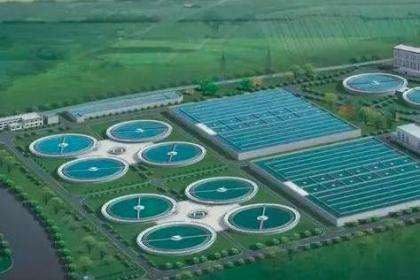Homepage / News Details
What are the applications of biological treatment in wastewater treatment engineering?
- Categroy:News
- Author:
- Origin:
- Release Time:2022-09-19 11:23
- Views:
【Summary】There are two types of biological treatment technologies that are most widely used in wastewater treatment projects: one is called activated sludge method, and the other is called biofilm method. The activated sludge process is a form of aerobic wastewater treatment performed by the biochemical metabolism of suspended biological groups.
What are the applications of biological treatment in wastewater treatment engineering?
【Summary】There are two types of biological treatment technologies that are most widely used in wastewater treatment projects: one is called activated sludge method, and the other is called biofilm method. The activated sludge process is a form of aerobic wastewater treatment performed by the biochemical metabolism of suspended biological groups.
- Categroy:News
- Author:
- Origin:
- Release Time:2022-09-19 11:23
- Views:

There are two types of biological treatment technologies that are most widely used in wastewater treatment projects: one is called activated sludge method, and the other is called biofilm method. The activated sludge process is a form of aerobic wastewater treatment performed by the biochemical metabolism of suspended biological groups. Microorganisms can form bacteria micelles with a large surface area during the growth and reproduction process, which can flocculate and absorb a large amount of suspended colloidal or dissolved pollutants in wastewater, and absorb these substances into the cell body. Complete oxidation of these substances releases energy, CO2 and H2O. The sludge concentration of activated sludge method is generally 4g/L. In the biofilm method, microorganisms adhere to the surface of the filler to form a colloid-linked biofilm. Biofilms generally have a fluffy flocculent structure with many micropores and a large surface area, and have a strong adsorption effect, which is conducive to the further decomposition and utilization of these adsorbed organic substances by microorganisms. During the treatment process, the flow of water and the agitation of the air make the surface of the biofilm constantly contact with the water, the organic pollutants and dissolved oxygen in the wastewater are adsorbed by the biofilm, and the microorganisms on the biofilm continuously decompose these organic substances, and in the oxidative decomposition At the same time as the organic matter, the biofilm itself is constantly metabolized, and the aging biofilm falls off and is taken out of the biological treatment facility by the treated effluent and separated from the water in the sedimentation tank. The sludge concentration of biofilm method is generally 6-8g/L. In order to increase the sludge concentration and then improve the treatment efficiency, the activated sludge method can be combined with the biofilm method, that is, the filler is added to the activated sludge tank. Known as a compound bioreactor, it has a very high sludge concentration, generally around 14g/L.
Releate News

Time of issue : 2024-04-22 08:56:03

Time of issue : 2024-04-15 16:52:27

Time of issue : 2024-04-09 10:13:04
CONTACT US
PRODUCTS
CALCIUM HYPOCHLORITE
TCCA
SDIC
BCDMH
FEEDBACK
© 1999-2018 北京网站建设有限公司 Copyright © 2012-2022 All Rights Reserved Powered by www.300.cn 冀ICP备12012949号 津公网安备 12010302002173号 Seo tag

